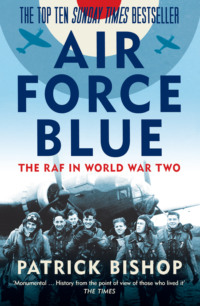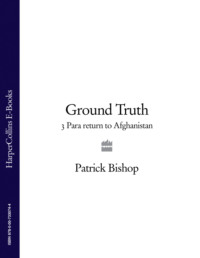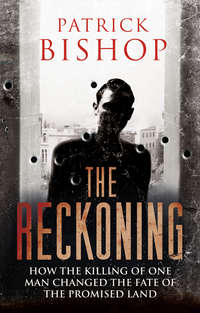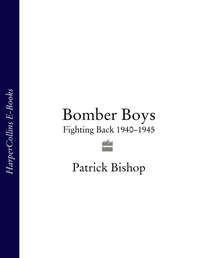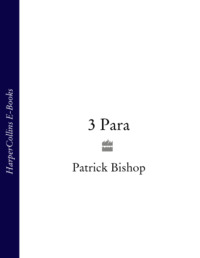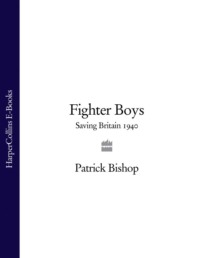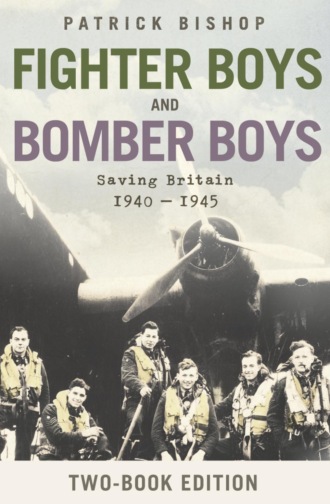
Полная версия
Fighter Boys and Bomber Boys: Saving Britain 1940-1945
Cinematic portrayals of the air were equally frank. The most successful was Dawn Patrol, starring Errol Flynn, David Niven and Basil Rathbone, which came out in 1938. The 59th Squadron is based on a sticky sector of the Western Front. Sixteen men have gone in a fortnight. Replacements arrive, fresh from a few weeks at flying school. Orders to send them up against hardened Germans come by telephone from senior officers, comfortably quartered miles behind the lines. New names are chalked up on the duty blackboard to be wiped off within an hour. Kit-bags are returned home without ever being unpacked. The Daily Express praised the film’s ‘lack of false sentiment or mock heroics’ and called it ‘one of the best and bitterest melodramas about men and planes’. It was a box-office hit and was seen, often several times, by hundreds of the pilots who fought in 1940. No one was put off. It was the glamour, camaraderie and romance of flying that pulled them back to the local fleapits, not the message of waste and futility. By this time every young man in Britain was facing a prospect of early extinction. Dying in the air might be awful, but it was better than dying on the ground.
With the expansion programme, thousands of young men were now being given a choice in how they would fight the next war. Before it began, the RAF recruited annually about 300 pilots and 1,600 airmen. Between 1935 and 1938 the average RAF intake was 4,500 and 40,000 airmen and apprentices. Air Ministry officials appealed directly to schools for recruits and advertised in the flying magazines and popular newspapers the young men they were looking for might be expected to read. One that appeared on the front page of the Daily Express, adorned by a drawing of three Hurricanes, promised ‘the life is one that will appeal to all men who wish to adopt an interesting and progressive career…leave is on a generous scale…applicants must be physically fit and single but no previous flying experience is necessary’. Pay, in cash and kind, was set at between £340 and £520 a year. A £300 gratuity was payable after four years’ service, or £500 after six years. Age limits were set between seventeen and a half and twenty-eight. The educational qualification was school certificate standards, although ‘an actual certificate is not necessary’.
Pat Hancock, a mechanically minded eighteen-year-old from Croydon, was at Wimbledon Technical College when he saw an advertisement in the Daily Express. ‘The ministry – bless it – was offering commissions to suitable young gentlemen – four years, and at the end if you survived you got a magnificent lump sum of £300, which was really a lot in those days. I pounced on it and sweet talked my father and mother into allowing me to apply.’14
Parental permission was needed if the applicant was under twenty-one, and many pilots seem to have faced, at first at least, family opposition. Flying was undeniably dangerous. In an era when men chose a profession, trade or occupation and tended to stick with it for the rest of their working life, it offered a very uncertain career. Despite popular enthusiasm, commercial aviation had been slow to expand. Air travel was confined to the rich. RFC pilots who hoped to make their livings flying in peacetime were mostly disappointed. Arguments were needed to overcome the objections. Billy Drake misunderstood the terms and thought the RAF would pay him an annuity of £300, a detail which persuaded his parents to grant their approval.
Geoffrey Page’s distant and authoritarian father summoned him to his London club when he heard of his plans to apply for Cranwell. Flying was the family business. Page’s uncle ran Handley Page, a leading British aircraft manufacturer. Over tea his father told him he had ‘spoken to your uncle at length about your desire to be a pilot and he has advised me strongly against it. Pilots, he tells me, are two a penny. Hundreds are chasing a handful of jobs.’ He refused to pay for the ‘stupidity’ of pursuing an RAF career. Page’s mother pleaded with him not to take up flying. Page rarely saw his father and resented the intervention strongly. Later he decided it had been motivated by concern. His father had lost a younger brother in the war, shot down and killed over the North Sea while serving in the Royal Navy Air Service.15 Page eventually made his own way into the RAF, via the London University Air Squadron.
The RAF set out to be meritocratic in its search for recruits, and Tedder, as director of training, decided to cast the net wide in the search for the best candidates. The requirement to have reached school certificate level meant boys from poor families who could not afford to keep their children on until sixteen were theoretically excluded. The rules were not always strictly imposed and officials occasionally used their discretion.
Bob Doe’s father was a gardener on the Surrey estate of the editor of the News of the World. Doe left school at fourteen without passing any exams and got a job as an office boy at the paper’s headquarters in Bouverie Street. One lunchtime he walked over to the Air Ministry headquarters in Kingsway and announced he wanted a short-service commission. ‘I was passed from office to office. They were very disapproving when they found I’d passed no exams. Then I found myself in front of this elderly chap with lots of braid on his uniform and he seemed to like me.’16 When he discovered that Doe had already joined the RAFVR and done seventy-five hours’ flying, any lack of formal education was forgotten. Doe sat the entrance exam, and with some coaching from his Air Ministry sponsor, got through. Doe’s case was exceptional. Most entrants had passed their school certificate and had gone to fee-paying or grammar schools.
One obvious source for the sort of healthy, uncomplicated, modern-minded young men the RAF was seeking was the Empire. Senior officers were sent overseas to Australia, Canada, New Zealand and South Africa to supervise selection. The decision to leave home to cross the world at a time when war seemed to be stirring again in Europe was a dramatic one. Yet the populations of the colonies felt strong sentiments of loyalty and respect towards Britain. The RAF appeal offered broader horizons to ambitious and adventurous young airmen as well as touching a sense of obligation. The response was enthusiastic. On catching their first sight of the mother country, many of them wondered whether they had made the right choice. Alan Deere left Auckland in September 1937 aboard the SS Rangitane and arrived at Tilbury docks at the start of an English winter. ‘The cold discomfort of the railway carriage and the flat, treeless acres of southern Essex were depressing reminders of the warmth and sunshine of far-off New Zealand. We stared in amazement at the grim rows of East End houses, pouring their smoke into the clouded atmosphere, and were appalled by the bustle and grime of Liverpool Street Station, so different from the luxurious gateway to the London of our dreams.’17
Despite the relative elasticity of the RAF approach, the selection process was thorough and demanding. After the written test and a strict medical, candidates were summoned to a board and questioned by a panel of officers. The examiners were looking for some technical knowledge and evidence of keenness. Enthusiasm for sports was usually taken as strong proof of the latter. At first, short-service entrants were sent off immediately to an RAF flying training centre, but the existing facilities could not cope with the wave of new recruits and Tedder decided to pay civilian flying schools to give ab initio instruction.
The new boys learned in two-seaters, Avro Tutors and de Havilland Tiger Moths. A first flight in the flimsy, thrumming trainers left an indelible impression, akin, as some would remember, to their first encounter with sex. Dennis David had his first lesson in a Blackburn B2 at the grandly named London Air Park, near present-day Heathrow. In reality it was a tiny grass field with a clump of trees in the centre, surrounded by houses. Many years later he ‘still [found] it hard to find the words to describe my sheer delight and sense of freedom as the little biplane, seeming to strain every nerve, accelerated across the grass and suddenly became airborne’.18
Fantasizing about flying aeroplanes was no preparation for the reality. A few, not necessarily the best pilots, found it gratifyingly easy. Johnny Kent, an eighteen-year-old Canadian, had begun learning at the Winnipeg Flying Club, ‘and was absolutely thrilled with the experience of actually handling the controls and I managed to cope with all the manoeuvres including an approach…at the end of this first lesson I knew I could fly’.19 But many found flight in a small, sensitive aircraft unnerving. Bob Doe was ‘petrified when I first went up. The side of the aeroplane was so thin that when you banked round I was afraid of falling through it. In no way did I have an affinity for it.’20 On Hubert Allen’s first flight as a new candidate for a short-service commission the instructor
put the Tiger Moth into a bunt [loop] and I was sick. He shouldn’t have done that, but perhaps he thought I was over-confident and needed cutting down to size. He was mistaken. I was under-confident so I probably acted the part of extrovert to conceal this. ‘Good God,’ he said, when after landing and turning off the magnetos he peered into my cockpit and noticed that I was covered in vomit. ‘I hope you’re not going to be one of those air-sick fellows…better give the rigger half a crown for cleaning up the mess.’…he strode off to the bar.21
Even those who had flown regularly as passengers discovered that the violent manoeuvres essential to military aviation differed dramatically from the pleasant sensations of straight and level flying. Tim Vigors, a sporting young man from a landed Irish family, had been taken flying by his godmother, who was an air enthusiast, and he liked it so much he applied to Cranwell. Starting flying training he felt fearful and nauseous. As the instructor put the aeroplane into a loop, a standard, elementary manoeuvre, a ‘queasy feeling engulfed me…then the whole weight of my body fell on my shoulder harness as we turned upside down in a slow roll…fear of falling out of the cockpit eclipsed all other sensations’.22
Initial success did not mean that progress would then be steady. Robert Stanford Tuck was a confident young man whose long face, athletic build and pencil moustache made him look like Errol Flynn. He had lead an adventurous life in his teens, escaping the mundane horizons of Catford in south-east London for a career in the merchant navy before being accepted for a short-service commission. Tuck started off well. But he found it difficult to progress beyond basics and develop the instinctive ease of handling, the feel that was essential if one was to become a serious pilot. Tuck’s cocky judgement after his first go at the controls was that flying was easy. So it is, if restricted to the basic manoeuvres of take-off, straight and level flight, shallow turns and landing. But after that the learning ladder is steep. Diving, looping and banking tightly are disorientating. Mistakes lead quickly to panic as the actions required to retrieve the situation are usually counter-instinctive. Tuck found he was the dud of his intake, snatching at the controls, over-correcting and suffering potentially fatal lapses of concentration. He began to fear that something he had come to love would be snatched away from him. It was only when he learned that flying did not require great physical effort that his performance started to improve. The secret lay in relaxation, avoiding sharp movements and settling oneself into the fabric of the machine so as to become part of its nervous system. You had to feel the aeroplane. For the fighter pilots of the First World War, buttocks had been an important sensory tool. Pilots felt they lost something when, in 1927, parachutes, which they were obliged to sit on, became standard equipment.
By the time war broke out the RAF was mass-producing officers. The privately run elementary flying training schools dotted around the country taught a basis in practical flying, with a grounding in navigation and gunnery, that prepared pupils for an advanced course at one of the RAF’s own flying training schools. The idea was that, unlike in the previous war, when half-trained men were expected to learn while on squadron duty, pilots would now arrive at their units ready for operations.
The initial flying was done in biplanes. Pupils underwent twenty-two stages of instruction, starting with ‘air experience’ – the first flip – through to aerobatics during the eight- to twelve-week course. Emphasis was placed on learning to recover from a spin, and there was a compulsory practice every week. It was the only manoeuvre, apart from straightforward flying, that was taught previous to the first solo, which came half-way through the course. Most pupils got off alone after between eight and ten hours in the air. Alan Deere was so impatient to do so he forgot the last words of his instructor to fly for only ten minutes and to attempt only two landings. ‘I was really straining at the leash by the time he had delivered these homilies and, thinking he had finished, banged the throttle open…and so into the air, solo at last. One, two, three landings, around again and again I went, the ten-minute limit completely forgotten in the thrill and excitement of this momentous occasion.’23
Aerobatics were promoted to give pupils complete confidence in their machines as well as preparing them for the stomach-churning reality of aerial combat. Flying blind, encased in a hood, relying only on the instruments, was also taught. Later this hair-raising method was replaced by means of an earthbound flight simulation trainer, the Link. The cost of elementary training was expensive at £5 per pupil per hour (double for advanced training) and those who showed little aptitude were weeded out early on. Those who finished the course successfully went on to a stint at the RAF Depot at Uxbridge for two weeks of drilling, physical training, familiarization with the limited administrative duties required of young officers and learning the niceties of mess protocol. During the fortnight, tailors arrived to kit out the fledgling officers and provide an opportunity for a laugh. Blond, raffish Paddy Barthropp remembered the response to the inevitable question, as they were measured up for their uniforms, which included mess kit with very tight-fitting trousers. ‘When the cutters asked their customers which side they dressed the reply would come. “Just make them baggy around the kneecaps.”’24 The new officers were given £50 to cover everything, including uniforms, shirts, socks, two pairs of shoes and a cap – not enough if you went to the better outfitters.
Before candidates moved on to the next stage of training, the chief instructor at the elementary flying school made a recommendation as to whether a pupil’s abilities best suited him to fighters or bombers. Flying anything required delicacy. Flying fighters required a particular softness of touch. Horsemen, yachtsmen and pianists, the prevailing wisdom held, made the best fighter pilots. The decision was made on the pilot’s flying ability but also on his temperament. Success depended on a combination of discipline of the sort needed to maintain the flying formations beloved of the pre-war RAF, with the audacity and nerve inherent in the dazzling aerobatics which the service also prized as an indication of worth and quality.
The pilots themselves had a say in their fate. To some, like Dennis David, it seemed the choice was preordained, feeling from the outset that ‘it was inevitable that I was to be a fighter pilot…from the start I was a loner. It was just me and my aeroplane hoping that neither of us would let the other down.’25 Alan Deere felt the same certainty, ‘had always determined to be a fighter pilot’ and pressed his superiors to be posted to fighters.
Fighters were not the automatic choice for all young pilots. The strategic thinking of the previous two decades had its effect on ambitious trainees. Most of Deere’s contemporaries thought bombers offered a better career and he was one of only four to go to a fighter squadron. But for the majority fighters offered a degree of freedom and individuality that was not available in a bomber crew – and, as was clear even before the war began, a greater chance of survival. Brian Kingcome, who after Cranwell was posted to 65 Fighter Squadron, considered that ‘only a man brave beyond belief would ever want to go into bombers. Us cards all went into fighters.’26
After leaving the depot, the half-formed pilots moved on to one of the flying training schools to learn on service aircraft. In the early days of expansion, trainee fighter pilots started out on biplanes like the Hawker Hart or the Audax. These eventually made way for the Miles Master and the North American Harvard. The latter was a twin-seat, single-engined trainer with half the horsepower of the new breed of fighters, but which none the less gave a taste of what it would be like to handle a Hurricane or Spitfire when the time came.
The instruction was testing. Deere lost his temper after his teacher scolded him for his clumsy performance of the highly difficult manoeuvre of spinning a Hart, first one way, then the other, with a hood over his head to blot out vision. The tantrum nearly lost him his commission and he was told he had been given another chance ‘only because the Royal Air Force has already spent so much money on your training’.27 The pilots were taught set-piece attacks against bomber formations, each one numbered according to the circumstances. There was some gunnery practice, a small part of which involved using live ammunition on towed aerial drogues.
The student pilots lived in the mess and dressed for dinner each night in mess kit, dinner jacket or lounge suit, depending on the day of the week. Saturday was dress-down day, when blazer, flannels and a tie were permitted. After successful completion of the first half of the course, pilots received their wings, a brevet sewn over the tunic pocket that announced their achievement to the world. It was a great moment, ‘the most momentous occasion in any young pilot’s career’, Dennis David thought. Al Deere felt a ‘thrill of achievement and pride’ as he stepped forward to receive the badge.
Finally, on completion of training, the new pilots were posted to a squadron. In the first years of expansion, units did their best to preserve what they could of the civilized atmosphere that had prevailed before the shake-up. At Hornchurch, where 65 Squadron was stationed, Brian Kingcome enjoyed ‘a most marvellous life…if I wanted to take off and fly up to a friend of mine who had an airfield or station somewhere a hundred miles away for lunch, I would just go. It went down as flying training. I didn’t have to get permission or [check] flight paths. I just went. If you wanted to go up and do aerobatics, you just went.’28 Hornchurch was a well-appointed station, built, like many of the inter-war bases, in brick to a classically simple Lutyens design. The mess, where everyone except the handful of married officers lived, was separate from the main base across the road and in front of the main gates. It stood in its own grounds, with a large dining room and bedrooms. Kingcome found it ‘luxurious beyond belief…the food was superb; you had your own batman and quarters. There was no bar in those days so you did all your drinking in the anteroom with steward service. The gardens outside the mess were beautifully kept with pristine lawns and flower beds.’ There were also squash and tennis courts and a small croquet lawn. Pilot officers – the lowest commissioned rank – were paid fourteen shillings (70p) a day, from which six shillings (30p) went on the cost of mess living. That covered food, lodging, laundry and a personal batman.
The rest went on drink and cars, which the junior officers clubbed together to buy to visit country pubs and make the occasional trip to London, less than an hour away. The frequency of nights out depended on two considerations: the price of drink and the price of petrol. To initiate a pub crawl, Kingcome and three or four friends would each put half a crown (121/2p) into the kitty. They would then board one of the jalopies (cost £10 to £25) held in loose collective ownership by the squadron. Petrol cost a shilling (5p) a gallon for the best grade, or tenpence (a little over 4p) for standard grade. After having downed several drinks costing eightpence (4p) for a pint of beer or a measure of whisky, they would still have some change over to share out at the end of the evening. Ten shillings (50p) would cover a trip to town, including train fare if no car was available, and the bill at Shepherd’s, a pub in Shepherd’s Market in Mayfair. It was run by a Swiss called Oscar and became one of Fighter Command’s main drinking headquarters in London. For a pound the evening could be rounded off in a nightclub.
Biggin Hill, which like Hornchurch originated as a First World War station, was rebuilt in September 1932 to a similar design. It became home to two fighter units, 23 Squadron and 32 Squadron. Pete Brothers arrived in 1936 to a ‘nice little airfield, a lovely officers’ mess’. The station had a reputation for joie de vivre, and its members enjoyed, when they were not flying, a life of sport, of visits to London and being entertained at surrounding country houses. Because of the airfield’s location, 600 feet above sea-level, unexpected visitors aboard civil airliners often dropped in when Croydon was closed by fog. One day in 1936 an Imperial Airways airliner landed carrying the American Olympic team, including Jesse Owens, fresh from his triumph at the Berlin Games. On another occasion a party of French models arrived after being diverted there on their way to a London fashion show. Churchill, whose home at Chartwell was only a few miles away, arrived unexpectedly one evening early in 1939. ‘We were having a drink in the anteroom when the door opened and in walked Winston,’ Brothers, who by then was a twenty-one-year-old flight commander with 32 Squadron, recalled. ‘We all got up and said, “Good evening, sir, can we get you a drink?” The waiter brought him a dry sherry and he asked if we could turn the radio on so he could hear the news. We listened, then he said, “Are you enjoying your Hawker Spitfires?” We didn’t like to say, “You’ve got it wrong, they’re Hurricanes.”’29
Behind the military briskness there lurked an atmosphere of fun. Jokes were not always in the best taste. In 1936, at the height of the war in Abyssinia, Biggin Hill, like every other station, put on a display for the annual Empire Air Day. To demonstrate bombing techniques a Hawker Tomtit dropped flour bombs on an old car carrying two ‘native’ figures. One, disguised in a black beard, dressed in a white sheet and wearing a pith helmet, was unmistakably supposed to represent Haile Selassie, the Emperor of Abyssinia who had lost his throne after the Italian invasion. The crowd loved it but the Air Ministry was not amused. There was jovial rivalry between the Biggin units. A new squadron, No. 79, was formed around a core of pilots transferred from No. 32 while Peter Brothers was there. ‘There were games. We decided we’d have a contest to see who could do the shortest landing. We had to pack it up when some chap hit the hedge and turned his aircraft over and smashed it up.’
Tangmere, at the foot of the South Downs, was a particularly pleasant post. A dreamy, prelapsarian atmosphere seems to have permeated the place in the last years of peace. Billy Drake, arriving there aged nineteen in the summer of 1937 as a newly commissioned pilot officer, found life was sweet. The summer routine involved rising at six and flying until lunchtime in Hawker Furies. Afternoons were spent swimming or sailing at Bosham and West Itchenor. Then there would be a game of squash or tennis before dinner and bed. Social life centred on the mess, furnished like the lounge of a luxury liner, where Hoskins and Macey, the white-coated stewards, shuttled back and forth with silent efficiency. There were good pubs nearby; like the Old Ship at Bosham, where on a summer evening you could sit with fellow pilots or a girlfriend and watch the sun going down over the estuary. Conversation concerned aeroplanes, cars, sport and parties, rarely politics. What was happening in Abyssinia, Germany or Italy was hardly mentioned. If the drums of war were beating, the pilots affected not to hear them. Drake had barely considered the implications of his decision to apply for a short-service commission. ‘I simply wanted to go flying,’ he said. ‘The fact that it might involve going to war never occurred to me until 1938 or 1939.’30




